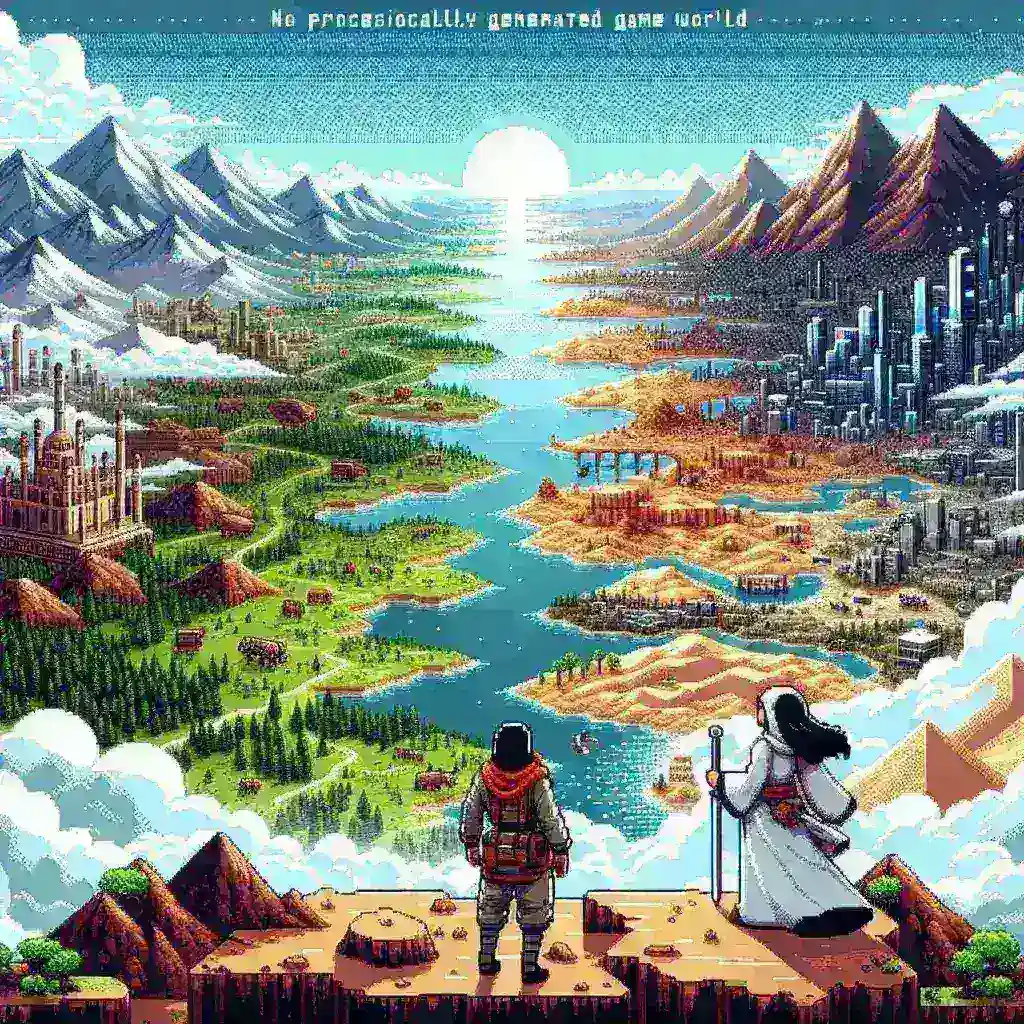Introduction
As technology continues to evolve, the gaming industry has witnessed a significant shift towards creating immersive experiences that captivate players. One of the most groundbreaking advancements in this domain is the concept of procedurally generated game worlds. These unique environments not only redefine player exploration but also push the boundaries of creativity and narrative in gaming.
Understanding Procedural Generation
Procedural generation refers to the algorithmic creation of content through predefined rules, rather than manual creation by developers. This innovative approach allows for the automatic generation of vast landscapes, intricate dungeons, and diverse ecosystems, providing players with an endless supply of unique exploration experiences.
The Mechanics Behind Procedural Generation
At the core of procedural generation are algorithms that dictate how different elements within a game world interact and evolve. Common techniques include:
- Noise Functions: These mathematical functions generate random variations in terrain and environment, leading to mountains, valleys, and rivers.
- Biomes: Different biomes, such as deserts, forests, and tundras, can be generated with unique flora and fauna.
- Randomized Events: Events such as weather changes, NPC encounters, and quests can be dynamically created to enhance the player experience.
The Advantages of Procedural Generation
Procedurally generated game worlds offer numerous advantages that significantly enhance gameplay:
1. Unlimited Exploration
One of the most appealing aspects of procedural generation is the virtually limitless exploration it offers. Players can venture into new territories every time they play, ensuring that each journey is distinct and unpredictable.
2. Enhanced Replayability
As each session can yield a different experience, games that utilize procedural generation often see increased replay value. Players can return to the game to uncover new secrets, quests, and landscapes that were not present in their previous playthroughs.
3. Cost-Effectiveness for Developers
Creating expansive game worlds manually can be a resource-intensive process. Procedural generation allows developers to save time and resources, focusing on core gameplay mechanics and story development.
Examples of Procedurally Generated Games
Several successful games have embraced procedural generation, proving its effectiveness in creating rich and engaging worlds:
1. No Man’s Sky
This ambitious space exploration game boasts a procedurally generated universe composed of over 18 quintillion planets. Each planet features unique ecosystems, wildlife, and resources, offering players countless hours of exploration.
2. Minecraft
Minecraft’s blocky world is generated using procedural algorithms that create diverse landscapes rich in resources, caves, and biomes. Players can build, explore, and survive in an infinite number of worlds, ensuring each gameplay experience is unique.
3. Hades
This critically acclaimed roguelike features procedurally generated chambers within the Underworld. Each run presents different layouts, enemies, and rewards, making every attempt to escape a fresh and thrilling experience.
Challenges of Procedural Generation
While procedural generation offers many benefits, it is not without its challenges:
1. Lack of Narrative Depth
One common critique is that procedurally generated worlds can sometimes lack the rich narrative depth that handcrafted environments provide. Developers must strike a balance between procedural elements and engaging storytelling.
2. Technical Limitations
Creating a seamless and coherent world through algorithms can be technically challenging. Issues such as terrain clipping, object placement errors, and performance optimization can arise.
3. Player Fatigue
With unlimited exploration comes the risk of player fatigue. Games must find ways to keep the content fresh and engaging to prevent players from losing interest.
The Future of Procedural Generation in Gaming
The future of gaming is undoubtedly intertwined with the advancements in procedural generation. As technology progresses, we can expect:
1. Improved AI Algorithms
As artificial intelligence continues to evolve, the algorithms used for procedural generation will become more sophisticated, allowing for even more intricate and diverse game worlds.
2. Enhanced Story Integration
Developers will likely find innovative ways to integrate narrative elements into procedurally generated environments, ensuring players remain engaged with the story while exploring.
3. Cross-Platform Play
With the rise of cloud gaming, players will be able to explore procedurally generated worlds on various devices, further democratizing access to unique gaming experiences.
Conclusion
Procedurally generated game worlds are revolutionizing the landscape of gaming by offering unlimited unique exploration experiences. As developers continue to harness the power of algorithms and AI, players can look forward to increasingly diverse and immersive environments that challenge their creativity and curiosity. The future of gaming is bright, and procedural generation will undoubtedly play a key role in shaping the adventures that await us.

